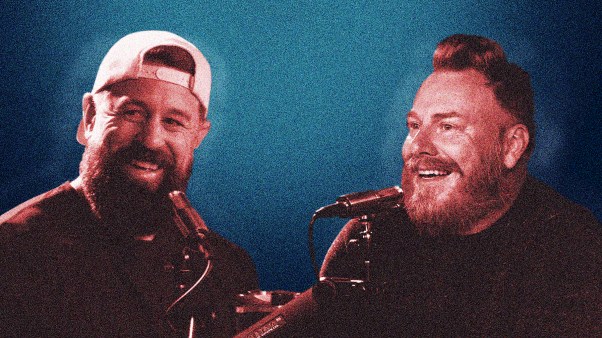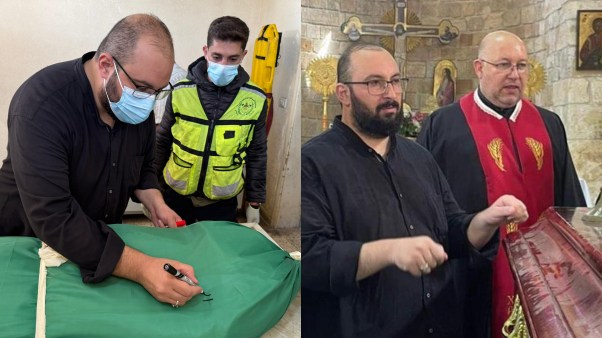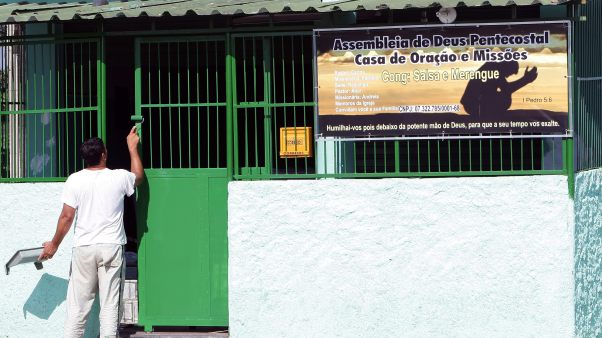Countries once targeted by Western missionaries are now producing missionaries of their own.
The new missionaries in Logroño, Spain, don’t consider themselves special. They have come to do a job. And with fewer than 100 evangelicals in a city of 250,000, they have their work cut out for them.
Nevertheless, the new missionaries are remarkable—not for who they are, but for what they represent. They are among the first to go out from a country only now emerging as a missionary-sending nation. Logroño’s new missionaries hail from El Salvador.
“In Latin America, many churches have begun to change from a position of receiving missionaries to a position of sending missionaries,” said Allen Lutz, vice-president for new ministries at the Christian Nationals’ Evangelism Commission, Inc.
What is happening in Latin America is happening throughout the world. Churches that were founded years ago by foreign missionaries are today gearing up to send their own people overseas.
This phenomenon is by no means new—there have been mission agencies in the Third World for well over 100 years. But in the last 15 years, the movement has mushroomed. Today, an estimated 20,000 non-Western missionaries are at work in scores of countries. Each year, several new mission agencies and hundreds of new missionaries join their ranks.
Information compiled by Overseas Crusades, Inc., indicates that non-Western mission agencies and personnel grew at the rate of nearly 450 percent during the decade ending in 1982. Research on the last three years is incomplete. But Larry Pate, Overseas Crusades’ coordinator of emerging missions, said the growth rate probably has not changed. “If this growth continues unabated,” he said, “we have every reason to believe there will be over 100,000 non-Western missionaries by the year 2000.”
In contrast, today’s North American missionary force stands at about 40,000, and that number increases by only a few percentage points each year. Thus, Lutz said, “a larger and larger portion of the world’s evangelization is going to be done by emerging missions.… This doesn’t negate the necessity of sending Western missionaries. It simply multiplies the resources many fold.”
Most non-Western missionaries belong to one of some 380 Third World-based mission agencies. About a thousand such missionaries are members of Western agencies that have internationalized their mission staffs.
To date, comparatively few Western agencies have added Third World missionaries. Keyes said the issue of internationalization is crucial for Western credibility. “We live in an international world. If just Americans present the gospel without cooperation with non-Americans, it would be detrimental to the cause of the gospel.”
Today, nearly one-third of Overseas Crusades’ mission force is non-American. Keyes said he hopes to increase it to 50 percent by 1990. Despite the increasing internationalization of Western agencies, Keyes said he expects Third World agencies to continue to deploy their own missionaries.
With some 4,200 missionaries, India is the biggest non-Western missionary-sending country, according to the Overseas Crusades publication Bridging Peoples. But these missionaries do not travel very far. More than 98 percent of them work cross-culturally with people groups within India, where some 3,000 dialects are spoken by a mosaic of culturally and racially diverse peoples.
“In America, we sometimes have the feeling that unless you go to another country, you are not being a missionary,” Keyes said. “In a sense that has been true of America in the past. But for an Indian missionary to go from Bangalore in the South to Nagaland in the Northeast would require more of a cultural adjustment than it did for me to go from Los Angeles to São Paulo, Brazil.”
The same is true for the second-largest non-Western missionary-sending country, Nigeria. This African country is home to many mission agencies, including the Evangelical Missionary Society (EMS), the largest non-Western mission agency in the world. Although some of EMS’s 620 missionaries go to neighboring countries, most work cross-culturally among Nigeria’s many distinct tribes and people groups.
Several agencies in the emerging missions movement concentrate on reaching the “diaspora,” or people of their own nationality who are scattered throughout the world. Although some Korean missionaries, for example, reach out to people of other nationalities, most are reaching second- and third-generation Koreans in other countries.
“Although it is Koreans reaching Koreans, it is still cross-cultural missions,” Keyes said. He explains that key cultural changes have taken place by the second or third generation in a foreign country.
Some Third World agencies pursue foreign missions in the pattern of Western missions. Thus, Japanese missionaries are working with Indonesians, and Brazilians are ministering to Zimbabweans. These missionaries typically leave countries where evangelicals make up only 10 percent or less of the population.
Some dispute the validity of sending missionaries from a country such as El Salvador, where evangelicals make up only about 4 percent of the population. In response, Lutz notes that if everyone had waited until all his countrymen had become Christians before sending out missionaries, the gospel would not have spread as far as it has. “God has always sent people to the uttermost parts of the world,” he said. “That is part of the Great Commission.”
BUSINESS
A New Jersey Bank Plans To Tithe Its Profits
A new bank in New Jersey is committed to donating 10 percent of its profits to Christian education and charities. The Atlantic Stewardship Bank, in Midland Park, New Jersey, is picking up where the Stewardship Bank of Oregon left off when it closed last year (CT, Aug. 10, 1984, p. 48).
Organized, owned, and operated by Christians, Atlantic Stewardship Bank will give 10 percent of its pretax profits to evangelical Christian organizations. Colleges, health centers, retreat centers, and missions groups are included on a list of potential recipients.
Through the sale of stock at $10 per share, the bank raised $250,000 more than the $2 million in capital that organizers expected. Deposits of $4.7 million after only six weeks of operation surpassed the projections of a feasibility study, which predicted deposits of $2.5 million after one year in business. Bank president Paul Van Ostenbridge said he expects Atlantic Stewardship Bank to show a profit in two years.
The bank’s bylaws require it to tithe 10 percent of its pretax profits. Bylaws also require the bank’s shareholders to be committed Christians. Most of the current stockholders belong to Christian Reformed and Roman Catholic churches.
Van Ostenbridge said sound business practices and a well-rounded loan review committee should help the New Jersey bank avoid problems that led to the failure of the Stewardship Bank of Oregon. In 1983 and 1984, the Federal Deposit Insurance Corporation (FDIC) ordered the Oregon bank to count as losses a total of $1.4 million in bad loans. The action nearly eradicated the bank’s beginning capital of $1.6 million. Efforts to raise new capital failed and the state forced the bank to close, naming the FDIC as receiver.
One of the Oregon bank’s organizers, Portland businessman Robert Laughlin, said losses included approximately $400,000 in loans to firms and associations in which a former bank director, Gregory Hughes, was involved. Hughes has been convicted on charges of securities violations unrelated to the operation of the Stewardship Bank of Oregon.
When Laughlin sparked the drive to organize the bank, he said it would cater to the financial needs of small business and tithe its profits to aid Christian education. The bank’s collapse has not dampened his enthusiasm for the concept of stewardship banking. He is considering organizing a stewardship-type financial services center at the site of the former Oregon bank.
Meanwhile, a banker who does not favor the stewardship banking concept but believes in operating a business on Christian principles has been successful with a new bank in Orange, California. Opened in 1983, the New City Bank commits up to 25 percent of its loan portfolio to churches. With deposits of $32 million and assets of $36 million, the bank is expected to turn a profit of $600,000 this year, said founder and president Wallace Linn.
The bank sponsors an annual New Year’s Eve event and a spring golf tournament to raise money for charity. Linn said he does not object to a bank tithing its profits, but added, “I think there’s more joy in tithing personally [rather] than corporately.”
MARK POPE
POLITICS
Leaders Of The Christian Right Announce Their Next Step
In 1984, conservative Christian political activists concentrated primarily on registering new voters. Over the past year, evangelicals and fundamentalists have taken control of local Republican organizations in some states, including Texas and Minnesota. Now they have launched a major drive to elect their own people to public office.
A recent conference on “How to Win an Election” drew more than 300 pastors and lay people from across the country, many of whom plan to mount local political campaigns. “We want to see a reformation in America,” declared author-evangelist Tim LaHaye, chairman of the American Coalition for Traditional Values (ACTV), which sponsored the conference.
Begun shortly before the 1984 election campaigns, ACTV is a broadly based umbrella group of evangelical and fundamentalist leaders. It is run at local levels by some 300 pastors.
“The tide is turning in our direction,” said LaHaye. “We’re going to do it again and again and again, until we flood the country.… If every Bible-believing church in America would trust God to use them to raise up one person to run for public office in the next 10 years, do you realize that we would have more Christians in office than there are offices to hold?”
U.S. Sens. William Armstrong (R-Colo.) and Jesse Helms (R-N.C.), and U.S. Rep. Jack Kemp (R-N.Y.) joined in calling for increased political action among religious conservatives. Armstrong encouraged his listeners to run for public office and to “pitch in and help candidates who really represent your point of view.” Kemp spoke out against abortion, pornography, and the absence of organized prayer in public schools. “God,” he said, “is the author of the U.S. Constitution.”
Moral Majority President Jerry Falwell, an ACTV board member, said the new political drive is the result of an organizing effort spanning several years. “Six or seven years ago we got past the psychological barrier, ‘it’s a sin to vote,’ ” he said. “But now, it’s a sin not to be registering voters.”
LaHaye linked political activity to revival, asserting that “the only way to have a genuine spiritual revival is to have legislative reform.” He explained that permissive laws allowing the widespread distribution of pornographic materials are among the reasons revival is impossible. “I think we have been legislated out of the possibility of a spiritual revival,” he said.
A note of caution came during a workshop from U.S. Rep. William Dannemeyer (R-Calif.), known for his strong antiabortion views. “We should understand the distinction between these two kingdoms [church and government],” he said, “for both ourselves and the witness of the church.… I question whether it is appropriate for an organized church, through its pastor, to advocate a particular candidate.”
RELIGIOUS NEWS SERVICE
COLOMBIA
Missionary Kidnaping Has A Happy Ending
After spending more than a month in captivity in southeastern Colombia, three New Tribes missionaries are free. Tim and Bonnie Cain and pilot Steve Estelle were taken hostage October 5 by the Revolutionary Armed Force of Colombia (FARC). Last month, the group released the three unharmed. It communicated as a reason for the kidnaping its belief that the missionaries were spies.
Throughout the ordeal, New Tribes officials were anxious about the Cains’ health. In a ransom note in which FARC requested $120,000 for Bonnie Cain, her health was described as “delicate.” Also, Tim Cain had been suffering from the tropical parasitic disease filaria, and it was uncertain if he had access to medication.
Prior to the kidnaping, it was Tim Cain’s need to see a doctor that prompted his request for a plane. After Estelle and fellow pilot Paul Dye landed on a remote strip, they were taken away by two different groups of FARC guerrillas. Dye was moved to a camp site half a mile from the plane. During the night, he managed to escape, get back to the plane, and fly away. New Tribes spokesman Melvin Wyma said he suspected the revolutionary group’s first goal was to confiscate the plane. It was after Dye’s escape, Wyma postulated, that FARC attempted to get ransom money.
Wyma said, however, that meeting the ransom demand or any part of it was never a consideration. He noted that this is standard policy for most mission organizations, including New Tribes. He said the United States had begun moving to secure the missionaries’ release, but that “we feel the Lord himself was putting pressure on those people.”
According to Wyma, the three missionaries had been treated with respect and left captivity in good health and in good spirits. “They feel the Lord met them at every turn,” he said. The Cains were being held within walking distance of the village where they had been living. They received regular visits and expressions of support from the Puinave Indians among whom they worked.
SETBACK
Voters Say ‘No’ To Campus Crusade’S University Plans
In 1977, the idea for a Campus Crusade for Christ-related university was born. Acting on what Campus Crusade president and founder Bill Bright said were instructions from the Lord, the organization began searching for 5,000 acres of land. Bright’s dream was to build an international, ten-discipline graduate university “for the purpose of educating potential Christian leaders from all nations in Christ-centeredness and biblical principles.”
After looking at land in several states, the organization in 1979 settled on a 5,043-acre site in San Diego, California, for $27 million. Called La Jolla Valley, the site lies between two affluent suburbs. Bright had received support from then-mayor of San Diego Pete Wilson, now a Republican U.S. senator. Campus Crusade established University Developments, Inc. (UDI), a wholly owned, for-profit subsidiary, to develop the project.
But last month San Diego voters delivered a severe setback to Campus Crusade’s plans. By a 56 to 44 percent vote, they approved Proposition A, which halts until 1995 any development in the tract of land owned by Campus Crusade as well as in some 15,000 additional acres of land nearby.
Passage of the proposition nullifies a 1984 San Diego City Council vote that approved plans for Campus Crusade’s graduate university (CT, Oct. 19, 1984, p. 55). The council also approved construction of a high-technology industrial area, whose profits were to have paid for the university’s building costs.
At a postreferendum reception, Bright thanked supporters of the development project. He said he believed the graduate university would someday be established at the La Jolla Valley site. “I believe the impetus for this university has come from the Lord,” he said, “and I know he will provide a way.”
Unless it is reversed by another referendum, Proposition A binds Campus Crusade, or any other developer, until 1995. However, Citizens for Community Planning, the political action committee of which Campus Crusade is a member, has discussed the possibility of a lawsuit. It questions the legality of Proposition A’s retroaction clause, which voided the 1984 San Diego City Council vote.
Ostensibly, the issue addressed by Proposition A was the wise use of land. Critics of Campus Crusade accused the organization of unfairly portraying the issue as a spiritual war. In a fund-appeal letter to 5,000 area constituents, Bright wrote, “I am convinced we face not only a battle to defeat Proposition A on November 5, but also, and more importantly, we face a major continuing spiritual battle that must be fought through the power of the Holy Spirit in order for us to carry out the plan for the International Christian Graduate University, which our Lord has inspired, ordained and guided from its inception.”
Campus Crusade stood by the letter, stating that its intentions had been misinterpreted. Spokesman John Jones said it was written specifically for a Christian audience. “Whether it used the best language is questionable, but it was never intended as a slam against any individual or group,” he said. “It was never meant to imply anyone in favor of Proposition A was therefore evil, un-Christian, or unspiritual.”
Campus Crusade had the overwhelming support of the region’s evangelical leadership. The San Diego Evangelical Association passed a resolution opposing the referendum; nearly 200 area churches assisted the “No on A” effort. In one show of support, volunteers positioned themselves at checkout counters in local Christian bookstores and dropped campaign literature into the bags of shoppers.
In pondering the outcome, Jones said it was understandable. He surmised that the fear of growth in San Diego may have been so deeply ingrained that it was irreversible, at least this time around. “I think a kind of grass roots, anti-development instinct arose …,” he said, “a feeling of not wanting this beautiful city to grow and be cluttered up by more people.”
BRIAN BIRD
GUATEMALA
An Evangelical’S Bid For The Presidency Falls Short
Last month, Jorge Serrano Elìas failed in his bid to become the first evangelical to be elected head of state in a Latin American country. He finished third out of a field of eight in Guatemala’s presidential elections, failing to make this month’s runoff election. (Efraìn Rìos Montt served as president of Guatemala, but he took over as a result of a military coup.)
The 40-year-old Serrano, an active layman in the 15,000-member Pentecostal Elim Church, captured 13.8 percent of the vote. Candidates from the Christian Democrat party (39 percent) and the National Center Union party (20.3 percent) finished ahead of him.
Nevertheless, some observers accord landmark status to Serrano’s candidacy. He beat out some well-established right-wing parties. And he did it largely without the help of fellow evangelicals, many of whom regard participation in the political process as sinful. Just a few years ago, a serious evangelical contender for high political office would have been inconceivable throughout most of Latin America.
Serrano served as president of the appointed Council of State under Ríos Montt, though he differed publicly with the president on a number of issues. Like Ríos Montt, who was ousted in 1983, Serrano suffered from widespread concerns about the mixing of politics and religion. “If I talk to the general public with the language I use with Christians, they might stone me,” he said during the campaign. “But if I use political language with the brethren, they question my Christianity.”
Preliminary results indicated that about 30 of an estimated 160 evangelical candidates were elected nationwide, including four congressmen. Guatemala is home to some two million evangelicals, about one-fourth of the country’s population.
STEVE SYWULKAin Guatemala










